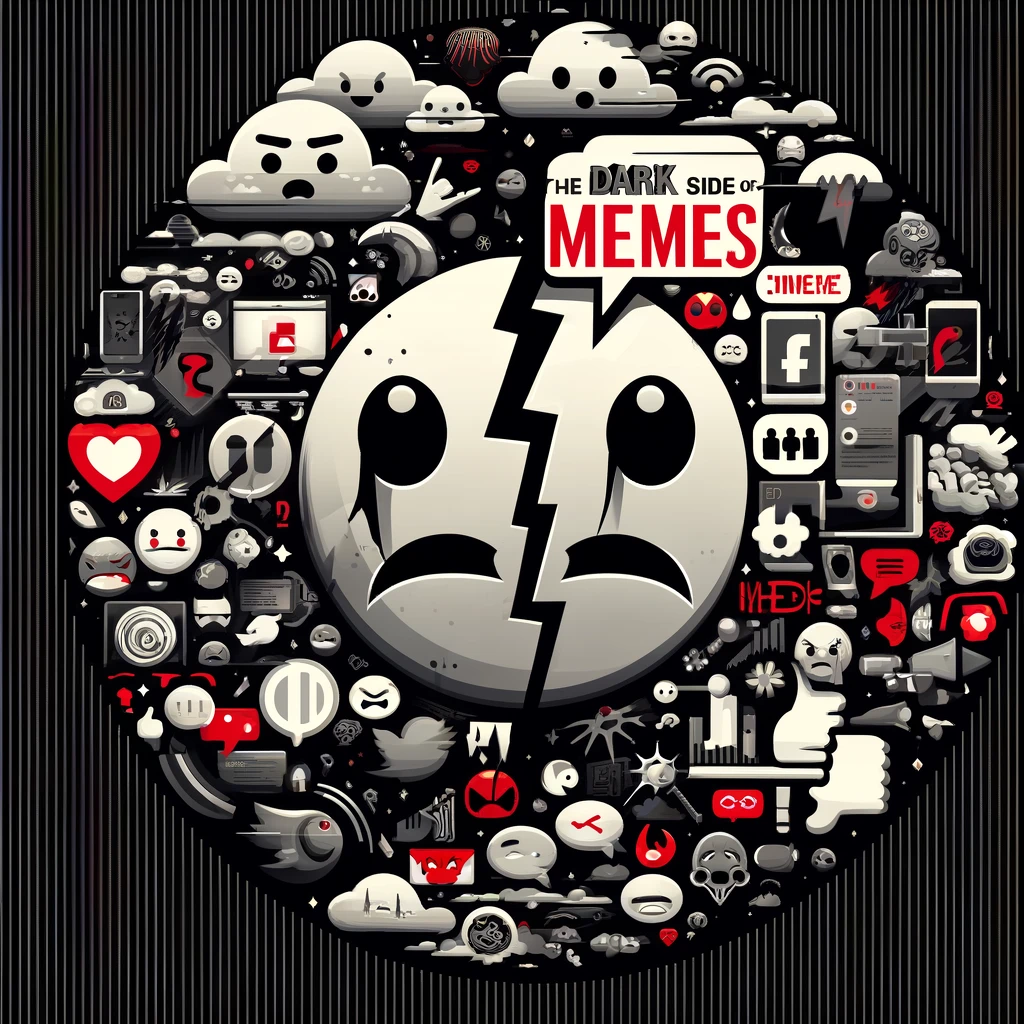The Dark Side of Memes: Controversies and Ethical Concerns

While memes are often associated with humor and creativity, they also have a darker side that can perpetuate harmful behaviors, spread misinformation, and contribute to ethical dilemmas. The very attributes that make memes so effective—virality, relatability, and ease of creation—can also amplify their potential for negative impact. This article explores the controversies and ethical concerns surrounding memes, examining the ways in which they can harm individuals and society.
Memes and Cyberbullying
One of the most significant ethical concerns associated with memes is their use in cyberbullying. Memes can be weaponized to mock, shame, or harass individuals, often with far-reaching consequences.
-
Public Shaming
- Overview: Memes that target specific individuals can lead to public shaming, where the person becomes the subject of widespread ridicule and humiliation.
- Example: The "Star Wars Kid" meme, which featured a teenager clumsily wielding a lightsaber, resulted in severe bullying and psychological distress for the individual involved.
-
Anonymity and Accountability
- Overview: The anonymity provided by the internet can embolden individuals to create and share harmful memes without fear of repercussions, making it difficult to hold creators accountable.
- Example: Anonymous platforms like 4chan have been breeding grounds for offensive and harmful memes, where users often feel insulated from the consequences of their actions.
The Spread of Misinformation
Memes can be potent vehicles for misinformation, as their simplicity and shareability can facilitate the rapid spread of false or misleading information.
-
Simplification of Complex Issues
- Overview: Memes often reduce complex issues to simplistic and sometimes misleading messages, which can distort public understanding and contribute to the spread of misinformation.
- Example: During the COVID-19 pandemic, memes spreading false information about treatments or the severity of the virus proliferated, potentially endangering public health.
-
Viral Spread of Falsehoods
- Overview: The viral nature of memes means that false information can spread quickly and widely, outpacing efforts to correct it.
- Example: Political memes during election cycles have been used to spread false narratives about candidates, influencing public perception and potentially swaying voter behavior.
Offensive and Harmful Content
Memes can perpetuate harmful stereotypes, reinforce prejudices, and spread hate speech, contributing to a toxic online environment.
-
Racist and Sexist Memes
- Overview: Memes that rely on racist, sexist, or otherwise discriminatory humor can reinforce harmful stereotypes and normalize bigotry.
- Example: Memes that depict certain racial or ethnic groups in a negative light can perpetuate societal prejudices and contribute to a hostile environment for marginalized communities.
-
Normalization of Hate Speech
- Overview: The casual nature of meme culture can sometimes normalize hate speech, making it seem acceptable or even humorous.
- Example: Memes that use offensive slurs or symbols associated with hate groups can desensitize viewers to the seriousness of such language and imagery.
Ethical Implications of Political Memes
Political memes can have significant ethical implications, particularly when they are used to manipulate public opinion or polarize discourse.
-
Astroturfing and Manipulation
- Overview: Astroturfing involves the creation of fake grassroots movements by powerful interests, using memes to create the illusion of widespread public support or opposition.
- Example: During political campaigns, memes created and disseminated by partisan groups can mislead the public about the popularity or credibility of certain viewpoints.
-
Polarization and Division
- Overview: Political memes can exacerbate polarization by presenting oversimplified and often inflammatory views that reinforce existing biases and divide communities.
- Example: Memes that depict political opponents as villains or caricatures can deepen ideological divides and hinder constructive dialogue.
Addressing the Ethical Concerns of Memes
Addressing the ethical concerns associated with memes requires a multifaceted approach involving education, platform policies, and individual responsibility.
-
Media Literacy and Education
- Overview: Promoting media literacy can help individuals critically evaluate the content they encounter online and recognize misinformation and harmful stereotypes.
- Example: Educational initiatives that teach people how to fact-check information and understand the impact of memes can empower users to engage more responsibly with online content.
-
Platform Policies and Moderation
- Overview: Social media platforms can implement policies and moderation practices to reduce the spread of harmful memes and hold users accountable for offensive content.
- Example: Platforms like Facebook and Twitter have developed content moderation tools and guidelines to address hate speech and misinformation, though these efforts remain a work in progress.
-
Individual Responsibility
- Overview: Users can contribute to a healthier online environment by being mindful of the content they create and share, avoiding participation in harmful or offensive meme trends.
- Example: Before sharing a meme, individuals can consider its potential impact and whether it perpetuates harmful stereotypes or spreads misinformation.
While memes are a powerful and often positive force in digital culture, their potential for harm cannot be overlooked. Cyberbullying, misinformation, and the perpetuation of offensive content are significant ethical concerns that need to be addressed. By promoting media literacy, implementing effective platform policies, and encouraging individual responsibility, we can mitigate the negative impact of memes and foster a more ethical and inclusive online environment. As meme culture continues to evolve, it is crucial to remain vigilant and proactive in addressing these challenges to ensure that the digital world remains a space for positive and constructive engagement.